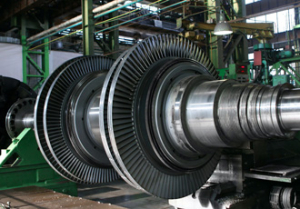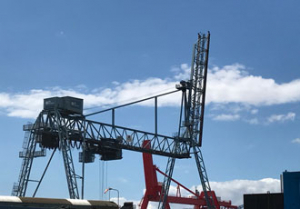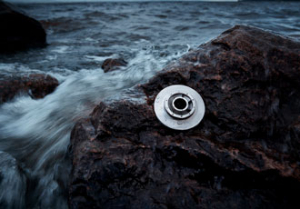Davall Stock Gears introduction to Torque limiters.
17th February 2011
Source:
Davall Stock Gears
All rotating systems have energy (inertia) to cause significant machine damage during a system overload. This inertia varies, based on the RPM and rotating mass for each application. A rotating mass made to stop suddenly, may cause machine damage, and a large mass rotating at a slow speed (RPM) has the potential to do more damage than a large mass rotating at a high speed. Overload devices are employed as a mechanical fuse, to protect machines, and permit the energy to dissipate, without causing excessive damage. At low speeds, systems can develop unnecessary twisting power, torque. In the advent of a failure this torque can damage expensive drive components (Shafts, Gearboxes, Chain, Couplings...), or be situated in a location which leads to prolonged production down time.
Torque is quantified as, Nm (Newton metre), and is a calculated as follows
Power (Kw) x 9549
r.p.m.
1Kw at 1000 rpm = 9.549Nm, so 1Kw at 100 rpm = 95.49Nm
Mechanical overload protectors are pre-set to “trip” at a specific torque value, protect components, trigger alarms, and extend system life. There are generally two approaches to mechanical overload protection. One is a shear pin device, which disengages the drive, and requires replacement parts to be fitted after overload is encountered.
The alternative is a torque limiter, which remains intact after an overload is encountered.
TORQUE LIMITERS comprise of 3 main elements.
1] The driver hub
2] The torque limiter
3] The driven element (sprocket, gear or coupling half are common components)
The majority of commercial torque limiters rely on a spring to apply pressure onto the driven component,(pneumatics is an alternative).
The amount of pressure applied quantifies the maximum level of torque to be transmitted, which, when exceeded, triggers the torque limiter to permit the driven component to “trip” or freewheel.
TORQUE LIMITERS are split into two styles of device.
A] “Central” slide style, with pressure applied to the driven component sides by spring force. Friction discs provide the drive to the driven component.
B] “Offset” dis-engaging style, the driven element is attached to a carrier plate and pressure ring (A). The ring has machined “pockets” in the face, a second pressure ring (B) with machined “pockets” in the face, and sandwiched between is a ring of balls (or rollers). The number of pockets in both faces, and number of balls is equal, with the balls providing the drive. The offset style has options of backlash free, single position engagement, different torque settings for clock and counter clock rotation, or internal stops fitted to ensure continuing rotation.
In operation
A] “Central” slide style
When an overload is sensed, the driven element (supported by a bush bearing) freewheels/slides between the friction discs, until the running torque is lower than the torque limiter setting.
B] “Offset” dis-engaging style
When an overload is sensed, the driven element (supported by a rolling bearing) twists, forcing the balls out of the pressure ring pocket 1, “out of phase”, forcing the pressure rings A & B apart, then the balls drop into next pocket 2. The pressure ring movement can be monitored, to provide the opportunity to trigger alarms. If the overload is still present, the balls are forced out of pocket 2 and into pocket 3. This action is repeated until the torque is lower than the pre-set trip level of the torque limiter.
Torque limiters should be positioned close to the source of any potential jam. This will allow the system inertia and torque to be monitored, to quickly and effectively disconnect the jammed section. The system can then be allowed to coast to a stop without causing further machine damage. A mechanical torque limiter can provide fast response times, offer protection at “crash” points, and the opportunity to introduce alarm systems.
The central slide style of torque limiter is a simple construction, generally lower in cost (fewer parts) than the offset dis-engaging style, but will require a higher level of monitoring to ensure the torque setting is maintained, as the friction discs can be subject to wear.
The introduction of rollers, instead of balls, into the offset style of torque limiters offers a more stable drive and can accommodate high acceleration and sudden braking. The roller type is used when specific angular re-engagement is required after overload. Careful arrangement of roller and “pockets” will ensure the driven component is fully supported in the dis-engaged phase of overload.
There are occasions when the drive can not be permitted to dis-engage. The introduction of stop pins to limit the axial movement of the pressure plates ensures continuous drive. The pressure plate is allowed a small amount of axial travel, sufficient to trigger a sensor, provide a signal, which can be used to alert the operator of an overload.
When the application dictates, on reversing drives for example, the machining of precision “sloped” (left or right) steps in the pressure plate face offers 2 different “tripping” torques values, high torque in one direction of rotation, and a lower torque in the opposite direction of rotation.
The understandings of overload and attention to detail within the design and development stages of a torque limiters result in the need to employ high quality parts. The materials employed (e.g. grade of steel, consistency of spring material) of all the constituent parts of the torque limiter have a significant influence in the performance of the safety device.
Low cost copies are offered through the use of inferior, low grade materials, with little or no understanding of the influences and implications of the design. A low cost safety device will initially offer a similar performance value, when compared to a more expensive part, but will not provide adequate full life protection to the expensive equipment it was installed to protect.
Davall Gears like the gears and pulleys we produce, and we want them to be kept from damage through overload, so we have introduced a range high precision torque limiters, designed, developed and manufactured in industrial heart land of northern Italy.
Power (Kw) x 9549
r.p.m.
1Kw at 1000 rpm = 9.549Nm, so 1Kw at 100 rpm = 95.49Nm
Mechanical overload protectors are pre-set to “trip” at a specific torque value, protect components, trigger alarms, and extend system life. There are generally two approaches to mechanical overload protection. One is a shear pin device, which disengages the drive, and requires replacement parts to be fitted after overload is encountered.
The alternative is a torque limiter, which remains intact after an overload is encountered.
TORQUE LIMITERS comprise of 3 main elements.
1] The driver hub
2] The torque limiter
3] The driven element (sprocket, gear or coupling half are common components)
The majority of commercial torque limiters rely on a spring to apply pressure onto the driven component,(pneumatics is an alternative).
The amount of pressure applied quantifies the maximum level of torque to be transmitted, which, when exceeded, triggers the torque limiter to permit the driven component to “trip” or freewheel.
TORQUE LIMITERS are split into two styles of device.
A] “Central” slide style, with pressure applied to the driven component sides by spring force. Friction discs provide the drive to the driven component.
B] “Offset” dis-engaging style, the driven element is attached to a carrier plate and pressure ring (A). The ring has machined “pockets” in the face, a second pressure ring (B) with machined “pockets” in the face, and sandwiched between is a ring of balls (or rollers). The number of pockets in both faces, and number of balls is equal, with the balls providing the drive. The offset style has options of backlash free, single position engagement, different torque settings for clock and counter clock rotation, or internal stops fitted to ensure continuing rotation.
In operation
A] “Central” slide style
When an overload is sensed, the driven element (supported by a bush bearing) freewheels/slides between the friction discs, until the running torque is lower than the torque limiter setting.
B] “Offset” dis-engaging style
When an overload is sensed, the driven element (supported by a rolling bearing) twists, forcing the balls out of the pressure ring pocket 1, “out of phase”, forcing the pressure rings A & B apart, then the balls drop into next pocket 2. The pressure ring movement can be monitored, to provide the opportunity to trigger alarms. If the overload is still present, the balls are forced out of pocket 2 and into pocket 3. This action is repeated until the torque is lower than the pre-set trip level of the torque limiter.
Torque limiters should be positioned close to the source of any potential jam. This will allow the system inertia and torque to be monitored, to quickly and effectively disconnect the jammed section. The system can then be allowed to coast to a stop without causing further machine damage. A mechanical torque limiter can provide fast response times, offer protection at “crash” points, and the opportunity to introduce alarm systems.
The central slide style of torque limiter is a simple construction, generally lower in cost (fewer parts) than the offset dis-engaging style, but will require a higher level of monitoring to ensure the torque setting is maintained, as the friction discs can be subject to wear.
The introduction of rollers, instead of balls, into the offset style of torque limiters offers a more stable drive and can accommodate high acceleration and sudden braking. The roller type is used when specific angular re-engagement is required after overload. Careful arrangement of roller and “pockets” will ensure the driven component is fully supported in the dis-engaged phase of overload.
There are occasions when the drive can not be permitted to dis-engage. The introduction of stop pins to limit the axial movement of the pressure plates ensures continuous drive. The pressure plate is allowed a small amount of axial travel, sufficient to trigger a sensor, provide a signal, which can be used to alert the operator of an overload.
When the application dictates, on reversing drives for example, the machining of precision “sloped” (left or right) steps in the pressure plate face offers 2 different “tripping” torques values, high torque in one direction of rotation, and a lower torque in the opposite direction of rotation.
The understandings of overload and attention to detail within the design and development stages of a torque limiters result in the need to employ high quality parts. The materials employed (e.g. grade of steel, consistency of spring material) of all the constituent parts of the torque limiter have a significant influence in the performance of the safety device.
Low cost copies are offered through the use of inferior, low grade materials, with little or no understanding of the influences and implications of the design. A low cost safety device will initially offer a similar performance value, when compared to a more expensive part, but will not provide adequate full life protection to the expensive equipment it was installed to protect.
Davall Gears like the gears and pulleys we produce, and we want them to be kept from damage through overload, so we have introduced a range high precision torque limiters, designed, developed and manufactured in industrial heart land of northern Italy.
Similar articles
More from Davall Stock Gears
- Davall Stock Gears introduction to Torque limiters. 17th February 2011
- Shaft couplings from Davall Stock Gears 12th May 2008

-(1)ed.jpg)










Write a comment
No comments